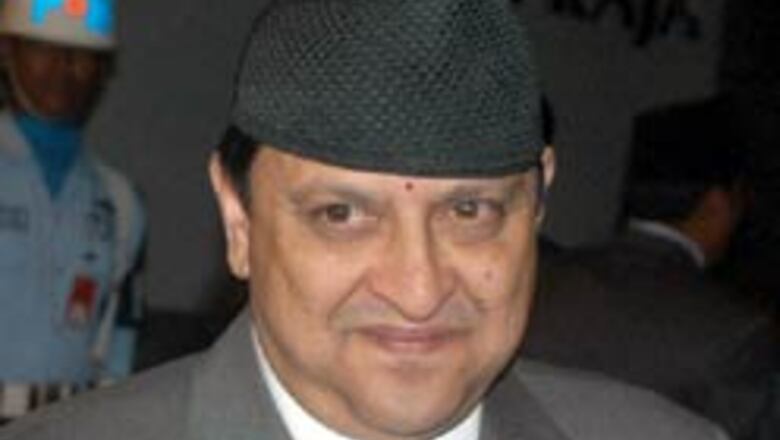
views
Kathmandu: It has been a long and hard road to the signing of the peace accord between the government and the Maoists.
After many previous failed attempts, Tuesday's peace agreement formally ends almost 11 years of armed conflict that has cost the nation more than 13,500 lives and caused untold suffering to thousands of others.
The Maoists, formally known as the Communist Party of Nepal (Maoists), launched their armed struggle to set up a communist republic in Nepal in February 1996 after then prime minister Sher Bahadur Deuba of the Nepal Congress Party refused to entertain their 40-point demand that included restructuring the state — four days before an ultimatum was to expire.
The Maoists, then thought to be an insignificant extremist group but perceived to be supported by some influential sections in India, began their guerrilla campaign from the remote hills of west Nepal in Rolpa district, about 325 kilometres west of the capital.
"The choice of Rolpa as their staging ground was significant," said B M Tuladhar, a university teacher. "The place is remote and neglected. Government law enforcement agencies can not reach there easily."
Also away from the scrutiny of the media the Maoists initiated their armed struggle, with weapons smuggled from India, by attacking lonely police posts in rural areas and slowly gained control of the impoverished area.
Nepal's government did little to squash the insurgency as it was in turmoil itself. From 1994 to 1999 there was a hung parliament, and then four successive governments in the next three years.
The political instability allowed the Maoist movement to grow, with only ill-prepared police countering the insurgency at first.
In their quest to establish a communist republic, the Maoists abducted civilians for their cause, with human rights body INSEC estimating that more than 64,033 people were kidnapped in the past decade.
The Maoists also took possession of the homes and land of many Nepalese, according to Maoist Victims Association. The Maoists themselves admit that they seized more than 60,000 hectares of land.
INSEC says 50,356 people were displaced by the Maoist insurgency.
The fighting between the government and the Maoists has killed at least 13,369 people with an estimated 8,339 killed by the state while 4,930 were killed by the Maoists, according to INSEC. Among the dead are 347 children.
The conflict has destroyed infrastructure, such as bridges and telecommunication towers, that took decades to build at a cost of millions. Rough estimates put the destruction at between $281 and $352 million.
The tragic Nepalese Royal Palace massacre in 2001 was a turning point in government relations with the Maoists. A mass reshuffle of leadership returned Sher Bahadur Deuba as prime minister and he initiated the first peace talks with the Maoists.
They were not successful. The Maoists walked out of the talks and for the first time attacked an army barrack, which resulted in Deuba imposing a nationwide state of emergency and a vow to tackle the Maoists head on, with the military.
The newly named King Gyanendra dismissed Deuba in October 2002 for his failure to hold parliamentary elections and appointed Lokendra Bahadur Chand as prime minister and the Maoists returned for the second round of peace talks.
In August 2003, the Maoists again walked away from the peace negotiations saying that the government was not heeding their demand for the election of a constituent assembly.
The agreement signed on Tuesday comes a year after the rebels joined up with Nepal's main political parties to topple King Gyanendra, who dismissed the country's elected politicians and took control of the state in February 2005.
Mass street protests in April prompted the resignation of Gyanendra and returned control to the three major and four small parties that formed the Seven Party Alliance.
The new accord includes the Maoists in the interim government and was reached only after much wrangling over the future role of the monarchy and disarmament of the rebels.
Elections are now slated for next year for an assembly that will determine whether Nepal will remain a kingdom and if so, what kind.
For the Nepalese it is hoped the peace accord will bring an end to an era of impunity that both the state and the Maoists practiced during the conflict period.
However, political observers are taking a wait and see approach, as there are reports of Maoists continuing extortion and abductions despite the ceasefire and a code of conduct that has been in place for the past six months.




















Comments
0 comment